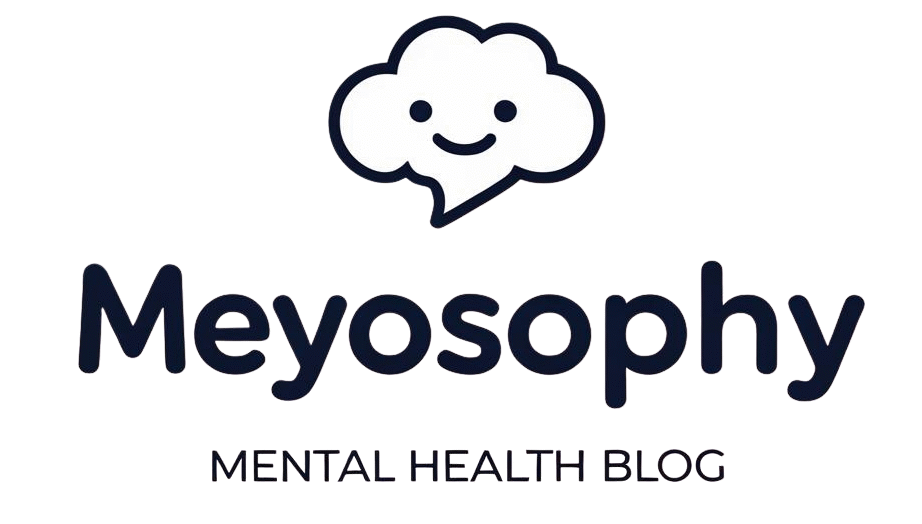Disclaimer: I’m not a mental health professional, everything here is shared from research and personal experience. If you’re feeling overwhelmed or need support, please consider talking to a qualified professional. You’re not alone. If you’re in the U.S., you can call or text 988 anytime. For help in other countries, visit https://findahelpline.com.
Ever feel like the world is a bit too much. The lights are too bright, sounds are too loud, thoughts are too fast? You’re not alone. Overstimulation (also called sensory overload) happens when one or more of your senses take in more information than your brain can comfortably process. For many people (especially neurodivergent people), parents juggling busy households and anyone living a modern (noisy life), overstimulation is a common and very human experience.[1]
This post explains: what overstimulation actually is, how to recognise it in yourself or someone you care for and practical things you can do right away (and long term) to manage it.
What exactly is overstimulation?
Your brain is a filter. It helps you ignore what’s irrelevant and pay attention to what matters. Overstimulation happens when that filter gets overwhelmed: too many sights, sounds, textures, smells, tastes, or mental demands compete for attention and your brain can’t prioritize them all.[2]
For neurodivergent brains (autism, ADHD, sensory processing differences), that filter may be more sensitive, so ordinary environments can feel intense. But overstimulation is not only a neurodivergent issue: tiredness, illness, stress, or a chaotic environment can lower anyone’s tolerance.[3] Worth mentioning is that people with PTSD and some anxiety disorders also seem to have a lower tolerance. Think of it as a cup. The sensory cup fills up quicker for some then for others.
When your system reaches its limit and the “cup” over flows, it can trigger the body’s stress response: adrenaline and cortisol surge, your heart races and you might shift into fight/flight/freeze. That’s why overstimulation often feels like an alarm going off inside you: sudden, urgent and hard to ignore.[4]
Common triggers (real-world examples)
Triggers vary person-to-person, but these are the usual suspects:
- Loud, unpredictable noises (sirens, crowds, sudden shouting).
- Bright, flickering, or fluorescent lights (big one!).
- Crowded spaces with lots of people moving and talking.
- Strong or unusual smells (perfume, cooking, cleaners).
- Multiple screens, notifications, rapid task switching.
- Annoying textures (scratching tags, tight clothing).
- Emotional overload: intense conversation, conflict, or worry.[5]
Imagine trying to help a child with homework while a dishwasher hums, a phone buzzes, and the TV blares. That combination can push most brains toward overload. Even things that seem small to others (a scratchy label, a faint buzz) can add up when they keep piling on.[6]
How to spot overstimulation: the symptoms
Overstimulation shows up physically, emotionally and cognitively. Look for patterns rather than a single sign.
Common signs:
- Irritability or short fuse: snapping over small things.
- Restlessness or frantic movement: fidgeting, pacing, banging.
- Trouble focusing: attention feels scattered; tasks become impossible.
- Sensory sensitivity: lights or sounds feel painfully intense. You might feel the need to escape the sensory trigger.
- Meltdowns or shutdowns: crying, anger, or withdrawing and going quiet.
- Physical reactions: headache, nausea, dizziness, a racing heart.
- Exhaustion afterward: you “crash” once the stimulus ends.
- Sleep problems: racing thoughts at bedtime or restless sleep.[7]
If several of these appear together and they tend to come on quickly in certain environments (busy shops, loud classrooms, chaotic family gatherings), there’s a good chance overstimulation is involved.[8]
How overstimulation differs from stress or burnout
These experiences overlap, but they’re not the same:
- Stress is often about demands and worry over time (deadlines, relationships).
- Burnout is the long-term result of chronic stress and exhaustion.
- Overstimulation is usually more immediate and sensory-driven. It’s a reaction to what’s happening right now in your environment.[9]
Overstimulation can spark anxiety or contribute to burnout if it happens often, but the useful distinction is that overstimulation responds fast to sensory adjustments (quiet room, dimmer lights), whereas stress and burnout need longer-term recovery strategies.[10]
Overstimulation and Neurodivergence
Overstimulation can happen to anyone, but if you’re neurodivergent (for example living with ADHD, autism, or sensory processing differences) it often shows up more frequently and more intensely. That’s because the brain processes incoming information differently. Instead of filtering out “background noise” (like a buzzing light or someone tapping their pen), your nervous system may treat all input as equally important. This quickly fills up the “sensory cup,” leading to overload.
Here are some ways overstimulation often shows up in neurodivergent people:
- Loud or chaotic environments can trigger fight-or-flight responses more quickly.
- Certain textures, fabrics, or food consistencies may feel painful or overwhelming, not just mildly irritating.
- Switching tasks or dealing with unexpected changes can create a flood of mental noise.
- Emotional intensity is often amplified, making it harder to regulate after overload.
- Recovery after overstimulation may take much longer than for neurotypical people.
The tricky part is that many neurodivergent people grow up being told they are “too sensitive” or “overreacting.” In reality, the brain is wired to pick up on more input and it’s not about weakness, it’s about different sensory thresholds.
Practical things you can do:
- Using noise-canceling headphones or earplugs in loud spaces.
- Scheduling quiet recovery time after social or work events.
- Practicing self-advocacy, like asking to dim lights or step outside during a meeting.
- Creating a “sensory toolkit” (fidgets, calming scents, weighted blanket, soothing playlist).
- Building in buffer zones in your calendar so you don’t go from one high-stimulation environment straight into another.
It’s not about avoiding life, it’s about finding the right supports so your nervous system feels safe and balanced.
Quick things to do right now (fast relief)
These micro-tools help when the alarm bell rings:
- Sensory self-check (30 seconds). Stop. Name the sensations bothering you (sound, light, touch). Naming helps your brain shift from panic to problem-solving.[11]
- 5-4-3-2-1 grounding. List 5 things you see, 4 you can touch, 3 you hear, 2 you smell, 1 you taste (or focus on your breath if smells aren’t available).[12]
- Box or 3-3-3 breathing (1–3 minutes). Inhale-count-hold-exhale-count (4-4-4-4 or 3-3-3). Slow breathing calms the nervous system.[13]
- Noise control. Put on noise-cancelling headphones or earplugs, or step outside for a minute. Lowering auditory input quickly reduces overload.
- Move briefly. Shake your hands, stomp your feet, or do 10 seconds of jumping jacks. Physical release can help your system reset.[14]
These are simple but powerful: treat them as “emergency buttons” you can press when you feel the storm building.
Practical strategies to prevent overload (daily & environmental)
Prevention matters. Here are realistic, workable habits:
Design a small sensory sanctuary
Create one low-stimulus corner at home and/ or work: soft lamp, tidy surface, comfy chair, ear defenders. It becomes your quick go-to when things get loud. Design it so you feel comfortable.[15]
Build predictable routines
Transitions and surprise cues are common triggers. Use timers (“5 more minutes”) and consistent schedules so brains have time to prepare. Your brain loves predictability.
Schedule sensory breaks
Block 5–10 minute quiet breaks into your day. Even short pauses reduce cumulative load and prevent the “tipping point.”[17]
Reduce digital overload
Turn off nonessential notifications, use focus modes, and limit background tabs. One task at a time beats multitasking for most of us.[18] I personally made a “dumb phone” mode on my Iphone. It only has essential apps and no unnecessary notifications and distractions. You can do this (with Apple products) in settings under “Focus”.
Curate your clothes and textures
Choose soft fabrics, remove tags and wear shoes that fit comfortably. Tiny sensory changes make a big difference for some people.[19]
Use tools that help
White noise machines, earplugs, sunglasses (indoors if needed), fidget objects, or weighted lap pads can all provide regulation options.[20]
If you’re a parent: consider classroom adjustments (permission to step out briefly, seating away from busy doors) and small sensory supports during homework time.
Longer-term supports (for ongoing issues)
If overstimulation is frequent or severe, these steps help build resilience:
- Work with an occupational therapist (OT). An OT can design a personalised “sensory diet”; scheduled activities that give your nervous system helpful input and prevent overload.[21]
- Therapy for regulation skills. CBT, ACT, trauma-informed therapy, or skills-focused coaching can teach strategies for emotional regulation and pacing.
- Improve sleep, movement and nutrition. Sleep deprivation and poor diet lower tolerance to sensory input; improving basics helps the whole system cope better.[22]
- Modify environments permanently. At school or work, advocate for lighting options, quiet rooms, flexible seating, or remote participation when needed.[23]
These approaches treat the root problems: improving baseline regulation rather than just responding to crises.
A few real-life examples
- Parenting after daycare pick-up: If your child melts down in the car after a loud morning, try a predictable wind-down ritual (quiet song + sensory snack) to bridge the transition.
- Workday overload: Block “focus-only” time, put your phone on Do Not Disturb, and use a 5-minute walk between meetings.
- Shopping with sensitivity: Go at quieter times, use a sensory checklist, or split errands over multiple days.
Small planning choices change the experience dramatically.
When to ask for help
If overstimulation regularly disrupts school, work, relationships, or sleep, consider professional support. An occupational therapist, developmental pediatrician (with kids), psychologist, or psychiatrist can assess sensory processing, ADHD, autism, anxiety, or sleep problems and recommend strategies or therapies.[24]
Final thoughts
Overstimulation is a real and tiring experience, but it’s also manageable (for most). Recognising the signs, using quick grounding tools, and making small changes to your environment and routine can dramatically lower the number of “too much” days you have. Also consider making a “Rest Plan”, something I write about here.
So next time you feel life getting loud, try a tiny experiment: step back, breathe, name the sensations, and give yourself permission to press pause. Your brain will thank you.
Sources
- Cleveland Clinic. (2021). Sensory overload: Causes, symptoms, and strategies. https://my.clevelandclinic.org
- National Autistic Society. (n.d.). Sensory differences. https://www.autism.org.uk
- Robertson, C. E., & Baron-Cohen, S. (2017). Sensory perception in autism. Nature Reviews Neuroscience, 18(11), 671–684.
- Porges, S. W. (2011). The polyvagal theory: Neurophysiological foundations of emotions, attachment, communication, and self-regulation. W. W. Norton.
- Dunn, W. (2001). The sensations of everyday life: Empirical, theoretical, and pragmatic considerations. American Journal of Occupational Therapy, 55(6), 608–620.
- Attwood, T. (2019). The complete guide to Asperger’s syndrome (2nd ed.). Jessica Kingsley Publishers.
- Cleveland Clinic. (2022). Coping with sensory overload (Grace Tworek, author). https://my.clevelandclinic.org
- National Institute of Mental Health. (2020). ADHD: Symptoms and diagnosis. https://www.nimh.nih.gov
- Sapolsky, R. M. (2004). Why zebras don’t get ulcers (3rd ed.). Holt Paperbacks.
- American Psychiatric Association. (2013). Diagnostic and statistical manual of mental disorders (5th ed.).
- Harvard Health Publishing. (2020). Grounding techniques for anxiety. https://www.health.harvard.edu
- Harvard Health Publishing. (2020). Grounding techniques for anxiety. https://www.health.harvard.edu
- Mayo Clinic. (2021). Stress relief: Breathing exercises. https://www.mayoclinic.org
- Medina, J. (2014). Brain rules: 12 principles for surviving and thriving at work, home, and school. Pear Press.
- Occupational Therapy Practice Guidelines. (2020). Sensory processing supports. American Occupational Therapy Association.
- Occupational Therapy Practice Guidelines. (2020). Sensory processing supports. American Occupational Therapy Association.
- Tworek, G. (2022). Coping with sensory overload. Cleveland Clinic.
- American Psychological Association. (2019). Multitasking and switching costs. https://www.apa.org
- Dunn, W. (2001). American Journal of Occupational Therapy.
- Autism Speaks. (2020). Sensory tools and supports. https://www.autismspeaks.org
- American Occupational Therapy Association. (2017). Occupational therapy’s role in sensory processing disorder.
- Killgore, W. D. (2010). Effects of sleep deprivation on cognition. Progress in Brain Research, 185, 105–129.
- Grandin, T. (2013). The autistic brain: Helping different kinds of minds succeed. Houghton Mifflin Harcourt.
- American Psychological Association. (2022). When to seek help for mental health. https://www.apa.org

